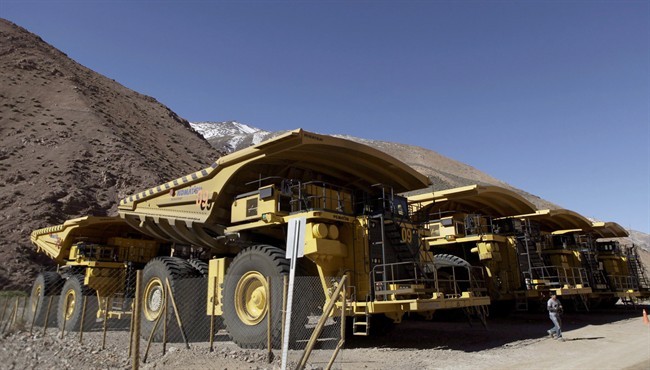The Supreme Court of Chile has upheld a decision by regulators that stopped construction at Barrick Gold Corp.’s troubled Pascua-Lama project until it completes work to keep it from contaminating the watershed below.

However, the court stopped short of ordering a re-evalation of the company’s environmental permit – a bigger obstacle that had been sought by an indigenous community living below the US$8.5-billion project.
Barrick (TSX:ABX) said Thursday it was “pleased that the ruling allows the project to advance in compliance with all legal and regulatory requirements.”
“Barrick has submitted a plan to Chilean regulatory authorities which estimates completion of the water management system by the end of 2014,” the gold miner said.
Chile’s environmental watchdog agency ordered construction stopped earlier this year until Barrick meets its environmental promises.
READ MORE: Chilean court suspends Barrick mine due to environmental irregularities
READ MORE: Chile fines Canada’s Barrick Gold Corp. $16M for environmental violations
John Ing, president of Maison Placements in Toronto, said the final cost of the project may be a bigger barrier for Pascua-Lama than the environmental concerns.
“This is proving to be, I believe, the world’s most expensive gold mine,” Ing said.
“One questions – in a capital-short environment – whether Barrick should be actually going slow or in fact should be putting it in mothballs.”
Ing said when Barrick decided to go ahead with Pascua-Lama, the environment for big projects was different.
“Today the environment is a lot more hostile for big projects. Mega projects bring mega problems, that’s been the history over the last few years for the gold miners,” he said.
Lorenzo Soto, who represents about 550 Diaguita Indians, told The Associated Press on Wednesday, that the Supreme Court’s decision is important and satisfactory but short of what they wanted.
“We disagree with the court, however, because it didn’t allow for our request to annul the project’s environmental permit,” Soto said.
The troubled project on the border between Chile and Argentina was initially expected to be producing gold and silver this year, but the company now targets production by mid-2016.
In addition to the opposition from indigenous people who live near the project, Pascua-Lama has also seen rising costs.
READ MORE: Class action filed against Barrick Gold
When the gold miner announced it was going ahead with the mine in 2009, it estimated a construction cost of $2.8 billion to $3.0 billion with commissioning expected in late 2012 and production in early 2013.
Earlier this year, Barrick took a $5.1-billion writedown on the project as part of a $8.7-billion impairment charge in its most recent quarter.
Officials in Argentina have been eager to keep building but most of the estimated 18 million ounces of gold and 676 million ounces of silver are buried on the Chilean side.
Barrick, one of the world’s largest gold producers, has been taking steps to decrease operating costs by lowering capital spending and staffing levels.
It has said it will trim $1.5 billion to $1.8 billion from its costs over 2013 and 2014 by cutting capital spending, including laying off staff.



Comments